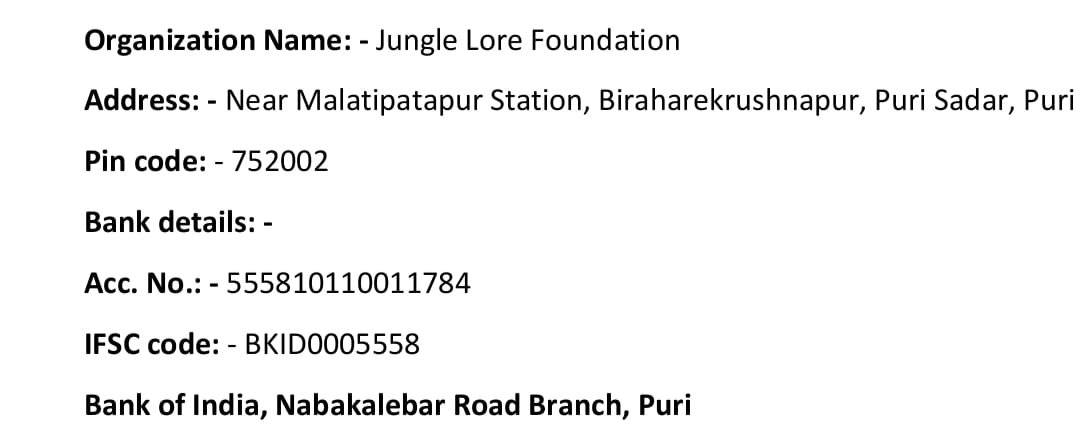Awareness based conservation of Indian sloth bears
 Awareness based conservation of Indian sloth bears wildlife and wild behaviour
Awareness based conservation of Indian sloth bears wildlife and wild behaviour
The Indian sloth bear (Melursus ursinus) is a member of Ursidae family and as their name suggests, they are native to the Indian sub-continent. This species is lankier than Asian black and brown counter parts. Their fur is long and shaggy forming a mane around their face and they possess long sickle shaped claws. They are insectivorous and use their long lower lip and palate to suck up insects. Their remaining diet consists of wild fruits, honey, flowers and rhizomes. This is why they are otherwise known as “Labiated bear”. Indian Sloth bears are mainly found in the lowland of Indian subcontinent. They were reported to be abundant during mid 1800s but declined severely during late 1800s and mid 1950s due to habitat loss and hunting (Prater 1948, Krishnan 1972). As human wildlife conflict is increasing day by day, this magnificent species finds itself in the ‘Vulnerable’ segment of IUCN Red list of Endangered species. This dramatic decline in their population calls for immediate attention from biologists and conservationists. Awareness conservation is the need of the hour. Combined with previous research on this species, awareness motives is expected to render the sudden decline in Indian Sloth bear population.
Habitat: (General)
The sloth bears are native to India, Sri Lanka and Southern low-lands of Nepal. They can be found in Scrublands, grasslands, Savannahs, Wet forests and Dry tropical forests. This bear lives in a wide variety of habitat like Teak forest, Sal forest, low land evergreen forest and hill country up to elevation of 1700m. In India Sloth bears mainly occur in moist and dry deciduous forests and (42% and 33% respectively) and less frequently in wet evergreen (13%) and dry scrub (6%) forests (Yoganand et al 2006). Sloth bears are reported to exist in 174 protected areas in India, which includes 46 National parks and 128 Wildlife sanctuaries.


Problem statement:
The population of Indian Sloth bear is depleting rapidly because of several factors especially human interference. Its habitat has been shrinking at a high pace and now this majestic species finds itself in the Vulnerable segment of IUCN Red list of Endangered species and they have listed human-sloth bear conflict and habitat degradation as two of the major factors behind the depletion of Indian sloth bear population and we agree with them completely.
Habitat degradation:
Just like every other species, the habitat of Indian sloth bears is degrading here. Several anthropogenic activities around the protected areas, aggravate extreme pressure and causes human-sloth bear conflict. These activities result in habitat fragmentation and degradation. There is a growing human settlement around the protected areas. Most of them are farmers and they clear the forest floor and establish agricultural settlements like maize fields. Indian sloth bears are known to migrate among forest landscapes. These agricultural settlements cause isolated forest patches seizing the safe migration of Indian sloth bears. Then the lack of inter connected forest floor causes them to amble into the human modified landscapes giving rise to human-sloth bear conflicts.
Mahanadi wildlife Division is uniquely blessed with both flora and faunal diversity. This is luxuriant moist peninsular high-level Sal and moist mixed deciduous forest along with extensive bamboo forests. The most dominated tree species are Sal (Sharea robusta), bamboo (Bambusa arumdinacea), Jamun (Eugenia cumini), mango (Mangifera indica), tendu (Diaspyras melanaxylon), wood apple (Aegle marmelos), char (Buchanania lamzar), phasi (Amogeissus acuminata), piasal (pterrocarpus marscipium Roxb) etc.
The mammalian fauna includes Panthera pardus, Elephas maximus, Bas gauras, cervus unicolor, camis lupus, Muntiacus muntjac, Maschiola meminna, Hyaena hyena, vulpes bengalemis etc.
The avifaunal diversity includes Harpactes fasciatus, Psittacula krameria, ketupa zeylonsis, Glacidium radiatus, chal caphaps indica, Permis ptilorhymcus, Dicrurus paradiceus, Lonchura malacca etc.
Human-sloth bear conflict:
Completely oblivious to human boundaries, sloth bears wander into the human modified landscapes during their migration in search of food or mate. Human and sloth bear live close proximity to one another here and this gives rise to some unhealthy interactions between these two species. We term it as Human-sloth bear conflictand we have tried to list some reasons such as Superstition led poaching, Sloth bear trafficking, Pet trade, Road kill, Retaliatory killing, Interaction inside bear habitat, Interaction at forest edges
Keeping it in mind we at Jungle lore foundation addressing such issues including local communities for more vital conservation events: –
- Mark and gather information about the human-sloth bear conflict prone area.
- Stop retaliatory killing.
- Stop the pet trade.
- Minimize roadkill.
- Infusion of awareness among the local community.
- Revival of compensation program.
- Snare removal.
- Community involvement.
- Recommendation and broader pronunciation for the seizure of habitat degradation.
People living most in the forest and forest freeing areas are poor and unaware about the importance of their forest and wildlife. We have conducted a series of educational awareness programs by distributing organic seeds, pamphlets and conducting workshops in their schools and villages. During this event issues like Retaliatory killing, plastic pollution, snaring, poisoning, forest fire issues were addressed.
With constant approach and deep study conducted by our team, we collected some valid information provided by locals about bear presence, their dens, their movement areas and also identified several threats and conflict prone locations for them. With the support of local forest staffs, we gathered information, awareness campaigns, anti-snare walks and rapport building with locals helped us to mitigate the bear human conflict and also compensated some small amounts to those who faced such conflicts.
Students are more curious about wildlife conservation and our frequent interactions inspired the next generation how to safeguard their own forest including wild habitats. Now forest department is more active on keeping an eye on illegal activities like hunting, tree felling, poisoning etc.

